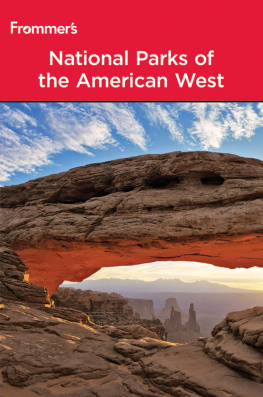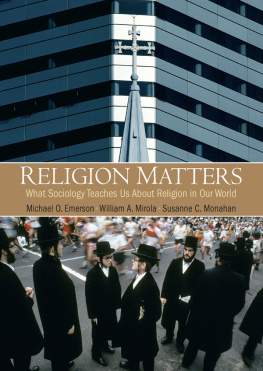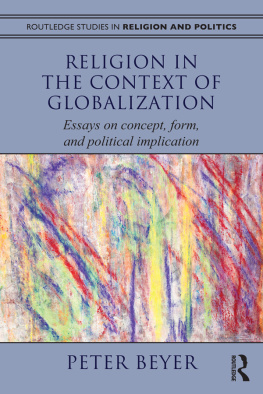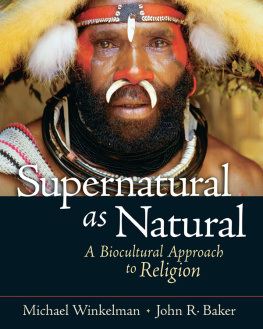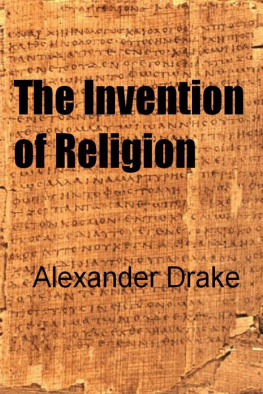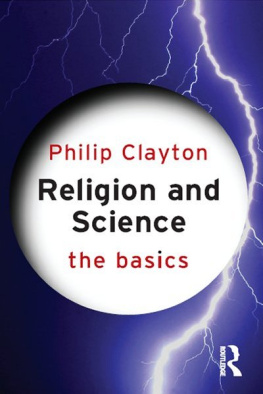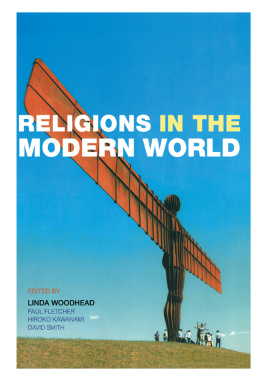Preface
I have written this book because I am unhappy with the usual surveys of world religions.its not clear how to slot in the other traditions like Daoism, Sikhism, Jainism, Shinto, not to mention the tribal religions of Native Americans or sub-Saharan Africans. Usually, as an afterthought, there are attempts to relate all these traditions to questions we modern folk are raising (e.g., about environmentalism, feminism, violence), whether or not those were their questions. And finally, there will be a word or two about just what religion itself is, what defines this category in which we have included all these traditions. How much do we include here? What if Confucians or Buddhists claim they are not religiouscan we count them anyway? And what about various clearly secular ideologies, especially Marxist ones; do they, in effect, replace religions in some societies? Do we study them as religions?
I do not mean to disparage these books, nor the noble efforts of their authors to portray fairly and accurately the religious lives of ancient and modern people all over the globe, and I cannot replace here what they accomplish in those books. Students interested in factsfacts about the authorship of the Christian gospels and the doctrines of early Buddhism, facts about the Hindu gods and their worship in temples, facts about Zen meditation and Islamic personal lawshould turn to these textbooks. What the usual hefty survey lacks is not facts but clear arguments about how those facts were chosen. What argument about the very nature of religion lies behind the chapter-by-chapter account of particular religions? For example, it is often assumed that real religion is all about the interior experience of sincere individuals, and thus the religion of lukewarm or hypocritical conformists is ignored. In other words, we are concerning ourselves with a tiny minority, but nowhere is that explicitly stated. Many Religions of the World textbooks should be retitled The Religious Life of Noble Persons.
Why do we read surveys of the religions of the world? Partly because, in an effort to be less parochial and more cosmopolitan, we want to see how other people answer the big questions. And partly because, assuming that a survey will be a menu of personal options, we believe we can use it to consider the options and pick a religious path that appeals to us. The most popular among such books are those that appeal to the seeker, providing the reader with a taste of a variety of spiritualities. Pursuing either or both of these aims depends on the idea that religion is a genus, comprising roughly equivalent species. And that each of these examples of religionHinduism, Buddhism, Islamserves the same function in society, or at least should serve the same function in society that privatized Protestant Christianity serves in open, tolerant, secularized western societies. Religion in this view, or at least authentic religion, is a personal philosophy and set of private practices with virtually no political role.
I am also somewhat unhappy about the way religion is treated in the study of world history. Surely the study of the history of the world is strikingly less Eurocentric than it was a few decades ago, yet a certain ingrained narrative is there. We still tend to have lodged in our heads a seemingly obvious progression that leads from Mesopotamia to Egypt to Greece to Rome to England to Massachusetts to California. India and China are added in, but often as classical and timeless civilizations unrelated to our story, the rise of the West. The most striking things about that narrative is that it ends up with us, and that it rather sidelines the vast Islamic civilization that dominated world trade and cultural exchange for a thousand years (ca. 7001700 A.D. ).
Unquestioned assumptionsabout models of world history or the ways religions evolveproduce other blind spots. Why are religions and civilizations treated like organisms that take birth, grow, flourish, decline, and die? Why is there often a survey of the most ancient Indian mythology, reflected in Vedic Sanskrit texts composed before 1000 B.C. , as part of a historical narrative of Hinduism, while there is no similar account of Greek and Roman mythology as the first chapter of European religion? The simple answer is because organizing a book with chapters on major world religions will mean having chapters on Hinduism and Christianity. Hinduism includes a treatment of early Vedic ritual and mythology, even while Vedic priests did not think of themselves as belonging to a religion named Hinduism and the vast majority of modern Hindus know very little about ancient Vedic traditions, while Christianity replaces the pagan traditions of Greece and Rome. Its prehistory has been covered by the chapter on Judaism, which again is treated as an ancient tradition going back to Abraham, even while the Rabbinic religion of the Judaism we know today was largely the product of the first century and Abraham would hardly have thought of himself as a member of the religion of Judaism. (Some Muslims would interject here that Abraham knew that he was a Muslim.) So the prevailing view has it that some ancient religious histories are relevant and others are not. But consider the medieval Italian peasant, celebrating holy days on an annual cycle, in harmony with the rhythms of agriculture, and venerating saints at sacred sites with ancient pre-Christian roots. Certainly such a person would affirm that she was a Christian. But is her religion really the same as that of the first-century Christian participating in what the Romans would have seen as a nonconformist cult, anticipating the imminent end of the world? Or does she, in fact, have more in common with the Roman pagan, both following ancient traditions and both suspicious of novelty? Similarly, is Mexican Catholicism both a chapter in the history of Euro-American Christianity and a chapter in Native American religion?


